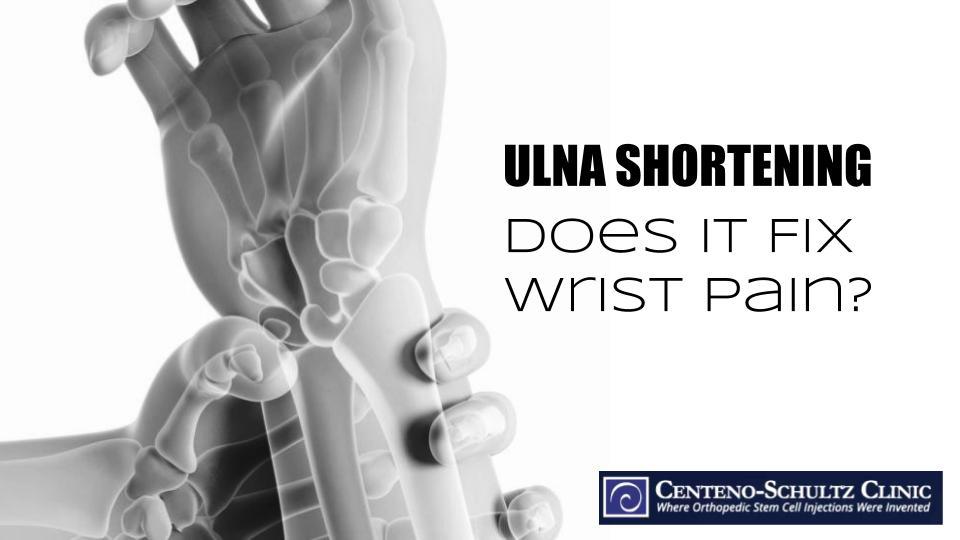Ulnar shortening is one of those procedures that is on our no-no list of surgeries. Unfortunately, however, we occasionally encounter a patient whose orthopedic surgeon has recommended this as a solution to the patient’s problem. The patient, who’s in pain and thinking all other treatment options have been exhausted, is sometimes very close to pulling the trigger on the surgery, if he or she hasn’t already. So what is ulna shortening, and why is it done?
Why Ulna Shortening?
There are two bones that make up the skeletal foundation of the forearm: the ulna (which stretches from the medial side of the elbow to the wrist, just above the pinkie) and the radius (which runs parallel to the ulna, stretching from the lateral side of the elbow to the wrist, just above the thumb). The ulna is the larger and longer of the two bones.
Arthritis and other damage in the ulnar side of the wrist is sometimes attributed to the idea that some people are just born with an ulna that’s too long (termed ulnar variance) and that this creates excessive force on the pinkie side of the wrist. This excessive force is what causes pain and eventually injury or arthritis. The solution? Ulna shortening, or, more specifically, a surgery called ulnar shortening osteotomy. Cutting out a chunk of the ulna is supposed to take the pressure off the wrist and eliminate pain. The big question here is, does a long ulna really cause the wrist pain?
We can start to find the answer in the fact that there is no high-level research supporting ulnar shortening, and to make matters worse, the surgery is riddled with complications.
Your Long Ulna Probably Isn’t Causing Your Wrist Pain
It’s important to understand that structure, nerve damage and irritation, and even the chemical environment in the wrist can all be at play when it comes to diagnosing the cause of wrist pain.. Interestingly, many studies have found that structural abnormalities on X-rays or MRIs of the wrist often don’t equate to pain in the patient. Meaning, the wrist abnormality is clearly there, but the patient is not in pain. Likewise, studies have also found wrist pain in patients whose MRIs or X-rays show no abnormality. So we can’t assume an issue is causing wrist pain just based on imaging. Why? These images can’t show nerve irritation (which can occur anywhere along the nerve branch from the neck to the wrist and present as wrist pain) or the local chemicals that may be present in the wrist that could be leading to pain.
This would explain why a patient might have no pain despite abnormalities shown in the structural anatomy; the nerves and chemicals are completely normal, hence no pain. It would also explain why a patient might be in pain despite clear problems in structure; irritated nerves or toxic chemicals in the joint could be the culprit.
So you can understand that a long ulna bone shown on an X-ray couldn’t be assumed to be the diagnosis for wrist pain. There just isn’t enough information there. So what else could be causing your wrist pain? We covered a few in “Help! Why Does My Wrist Hurt?” last week. These include ligament instability, thumb arthritis, TFCC injury, nerve irritation, and wrist tendonitis.
Orthopedic Surgery vs. Interventional Orthopedics for Wrist Pain
By the time a patient consults with an orthopedic surgeon, everything regarding their wrist pain is being viewed through a surgeon’s lens as to how surgery can fix it. Interventional orthopedics is much different. Our mission is to find the problems the surgeons miss and fix them without surgery.
So is the pain in your wrist resulting from an ulna bone that is just too long? Highly unlikely, so it doesn’t make much sense to let a surgeon go in and lop off some of your ulna bone. At the very least, be sure to see an interventional orthopedic physician, who will determine the root cause of your wrist pain, before you let a surgeon cut out some of your arm bone.

